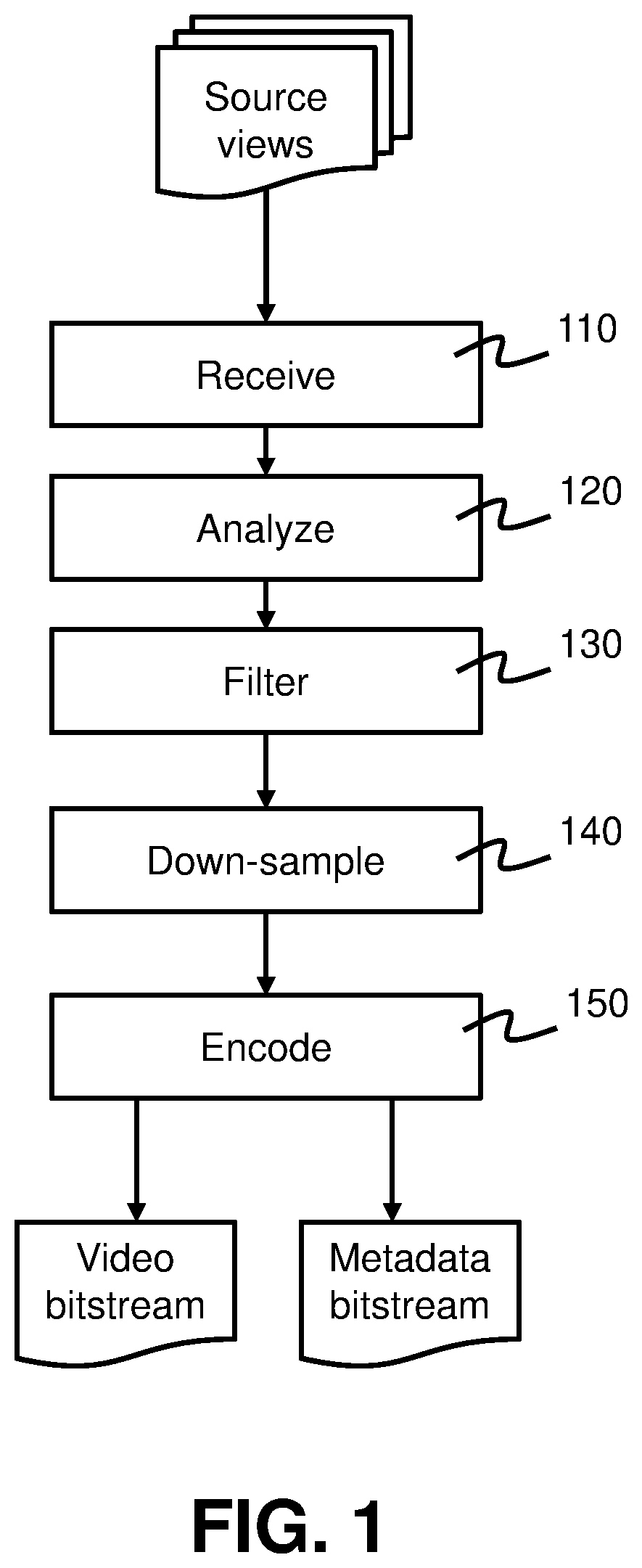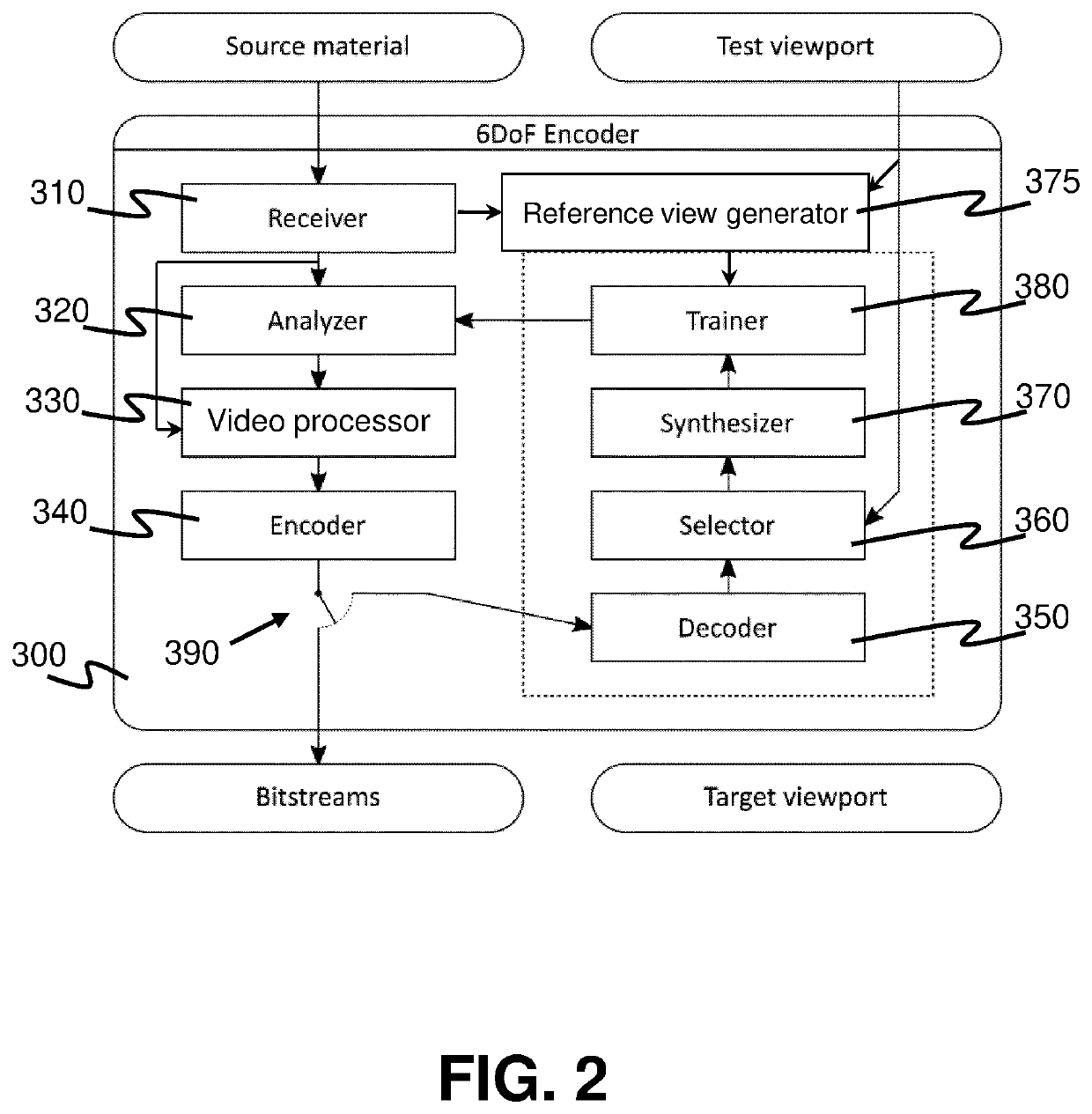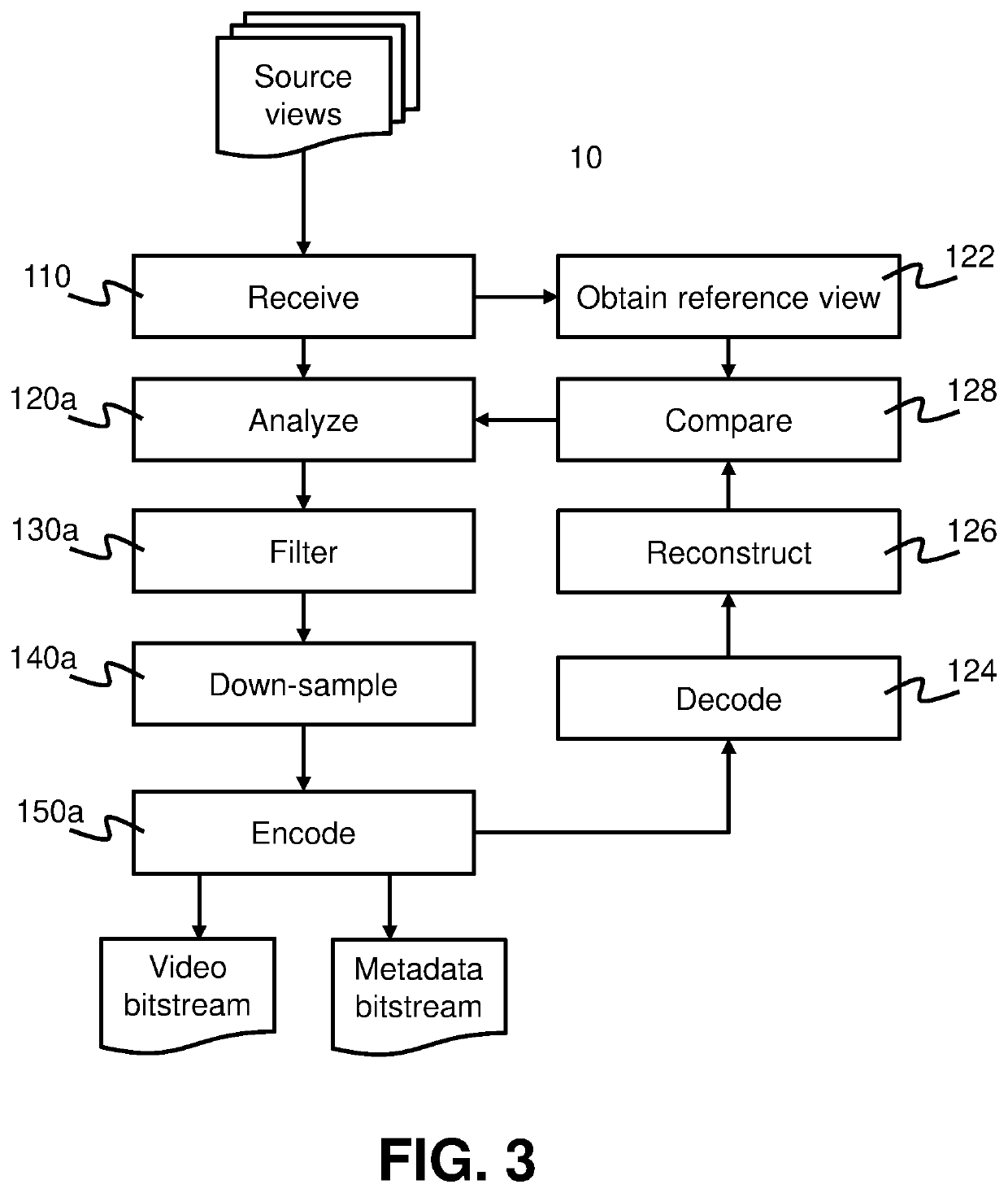Coding scheme for immersive video with asymmetric down-sampling and machine learning
- Summary
- Abstract
- Description
- Claims
- Application Information
AI Technical Summary
Benefits of technology
Problems solved by technology
Method used
Image
Examples
first embodiment
[0119]FIG. 1 is a flowchart of a method of encoding immersive video according to a FIG. 2 shows a block diagram of a video encoder 300 that may perform the method of FIG. 1.
[0120]In step 110, an input (receiver 310) of the encoder 300, receives source video data. The source video data comprises multiple source views, each of which includes texture data and depth data. The receiver 310 is coupled to a video analyzer 320. In step 120, the video analyzer analyzes the source video data to determine the best configuration for subsequent filtering and down-sampling steps. This analysis will be described in greater detail below.
[0121]The video analyzer 320 is coupled to a video processor 330. The video processor is also coupled to the receiver 310. The video processor receives the source video data from the receiver 310 and receives information from the video analyzer about the configuration determined by it. In step 130, the video processor filters at least one of the source views and in...
second embodiment
[0124]FIG. 3 shows a flowchart of a method of encoding immersive video according to a Steps that are similar to the embodiment of FIG. 1 are given like reference numerals. The method of FIG. 3 differs from the method of FIG. 1 principally in that it in uses a reference decoder in the video encoder.
[0125]As shown in FIG. 2, the video encoder 300 includes a reference view generator 375. It also includes a reference decoder, comprising decoder 350, selector 360 and synthesizer 370. The video encoder 300 further comprises a trainer 380, coupled to the reference view generator 375 and the output of the reference decoder—in particular, the output of the synthesizer 370. In step 122, the reference view generator 375 generates at least one reference view, from the source video data. The reference view may be one of the source views or it may be a synthesized view. The reference view chosen is determined by test viewport parameters, input to the video encoder 300.
[0126]The steps of analyzin...
fourth embodiment
[0132]FIG. 5 is a flowchart of a method of decoding immersive video according to a FIG. 6 shows a block diagram of a corresponding immersive video decoder, which may implement the decoding method, according to an embodiment. The immersive video decoder 400 comprises a bitstream input (receiver 410); a control input (selector 450); a decoder 420; and a reconstruction processor, comprising synthesizer 430 and upscaler 440. The video decoder further comprises a selector 450.
[0133]In step 210, the bitstream input receives a video bitstream and a metadata bitstream produced by a video encoder 300 as described above. The selector 450 receives viewport parameters of at least one target view to be rendered. In step 220, the decoder 420 decodes from the video bitstream one or more of the plurality of source views (which may be selected by the selector 450 based on the target viewport parameters). If the decoder 420 has knowledge or a prediction of the target viewport, it can selectively dec...
PUM
 Login to View More
Login to View More Abstract
Description
Claims
Application Information
 Login to View More
Login to View More - R&D
- Intellectual Property
- Life Sciences
- Materials
- Tech Scout
- Unparalleled Data Quality
- Higher Quality Content
- 60% Fewer Hallucinations
Browse by: Latest US Patents, China's latest patents, Technical Efficacy Thesaurus, Application Domain, Technology Topic, Popular Technical Reports.
© 2025 PatSnap. All rights reserved.Legal|Privacy policy|Modern Slavery Act Transparency Statement|Sitemap|About US| Contact US: help@patsnap.com



